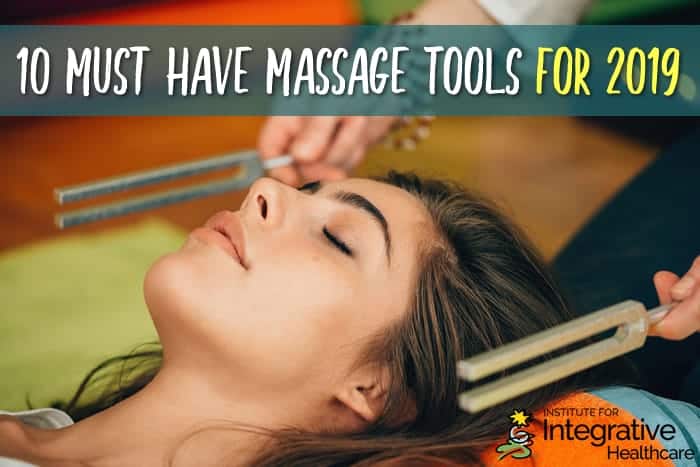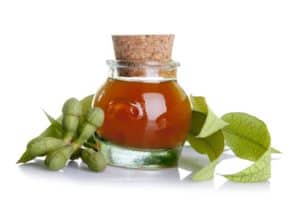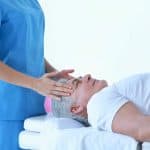

Try These 10 Massage Tools in 2019
1. Naboso insoles: These insoles take advantage of the thousands of mechanoreceptors in the foot which, when stimulated, affect how we maintain upright stance, activate our postural muscles, and actively control impact forces. Studies have shown that textured insoles like these can improve balance and stability, which suggest their usefulness not only for athletes but also for seniors and those suffering from Parkinson’s, multiple sclerosis, and post-stroke clients, among others.
Even if you don’t want to stock these insoles to sell, Naboso insoles are worth knowing about for those clients who might benefit from them.
2. Eucalyptus oil: Research suggests that may have anti-inflammatory properties. In addition, inhaling steam with eucalyptus oil is often recommended for an array of respiratory problems, from chest congestion to sinus infections.

Putting a few drops on a towel hung from the face cradle can help clients breathe more easily when they are lying face down. Most people find the smell refreshing and pleasant. Peppermint oil works similarly.
3. Arnica massage oil: Arnica is known for reducing muscle soreness and inflammation, thus making it a good choice for any therapeutic massage.
But it also has a generally pleasant odor and leaves the skin feeling less sticky than many other massage oils, thus making it suitable for relaxation massage as well. Another quality that makes this massage oil attractive is that it seems to stay fresh for very long periods. I have used Weleda Arnica Oil for years now and have never had a bottle of oil become rancid.
4. Foot balm: Massage creams that are marketed especially for the feet and that have a combination of invigorating essential oils—such as pine, peppermint, ginger, and/or tea tree oils—leave a client’s feet feeling fresh and tingly well after the massage is over. Clients will also love how soft these balms will leave their feet.
5. Tuning fork: Because sound can travel deeply into the body and access hard-to-reach places, applying the stem of a vibrating, calibrated metal tuning fork to the body (esp. to acupressure points) can help release tension and promotes a sense of well-being.
In addition, there is research that suggests tuning fork therapy may actually help relieve muscle and bone pain. The ohm frequency tuning fork is ideal for promoting relaxation. Taking a class on techniques for using this therapy would be helpful in achieving its maximum benefits.
6. Acuforce massage star: This is a great tool for doing trigger point self-care because its weight helps compensate for not being able to get the same kind of leverage you can get when working on someone else.
It can also, however, be used effectively on clients since the weighted tool inherently applies pressure allowing you to use less of your own body strength. The wedge “point” of the star can also be used for muscle stripping and cross-fiber friction.
It comes in two different sizes so you can get the right fit for your hand. The coating on the tool is soft but durable.
7. BioFreeze: Because topical menthol gels have been shown to decrease local blood flow and reduce the effects of inflammation, BioFreeze can mitigate any negative side effects of, for example, deep tissue work. More generally, because BioFreeze and other cryotherapies confuse the pain signals to your brain, its application enhances the client’s sense of pain relief.
One of the benefits of BioFreeze over, for instance, oral pain killers is that its effects are almost immediate.

Like foam rollers, the muscle roller stick provides myofascial release. The advantage of the stick is that it is more easily transported than a foam roller. The disadvantage of the stick, though, is it’s hard to use on muscles you can’t easily reach (e.g., your back) when holding onto its two handles.
But being able to demonstrate both the muscle roller stick and the foam roller to clients gives them options for discovering what will work best for them.
9. Massage table warmers: While not a new tool, there is nothing like a massage table warmer for keeping clients warm and relaxed. Whether you’re doing therapeutic work or relaxation massages or something in between, clients who are guarding against feeling cold will have tensed their muscles, making them that much more difficult to massage.
A table warmer—or, failing that, a heat pack or two—increases the client’s blood flow and begins the process of giving you access to deeper tissue layers. A table warmer certainly isn’t a replacement for a massage therapist, but a warm table can definitely make your work more effective.
10. Emergen-C: If you are in the habit of providing your clients with a glass of water following a massage, consider, instead, offering them some Emergen-C. Emergen-C contains high doses of vitamins C, B6 and B12, plus other nutrients, like zinc and vitamin D, needed for immunity and energy levels.
There is some evidence that these nutrients can boost immunity for those who have a deficiency in them. And even though it’s unclear whether there’s a health benefit to consuming Emergen-C for healthy adults, the sodium bicarbonate in it can help balance the bodies pH and its magnesium can assist with fluid balance and hydration.
In short, unless one consumes it in high doses, there is no down side to drinking Emergen-C and it may be helpful in the several ways discussed above.
Conclusion
New tools can, without doubt, be useful. But there is no substitute for furthering your massage education, learning new techniques and skills, and gaining a better understanding of the body.















